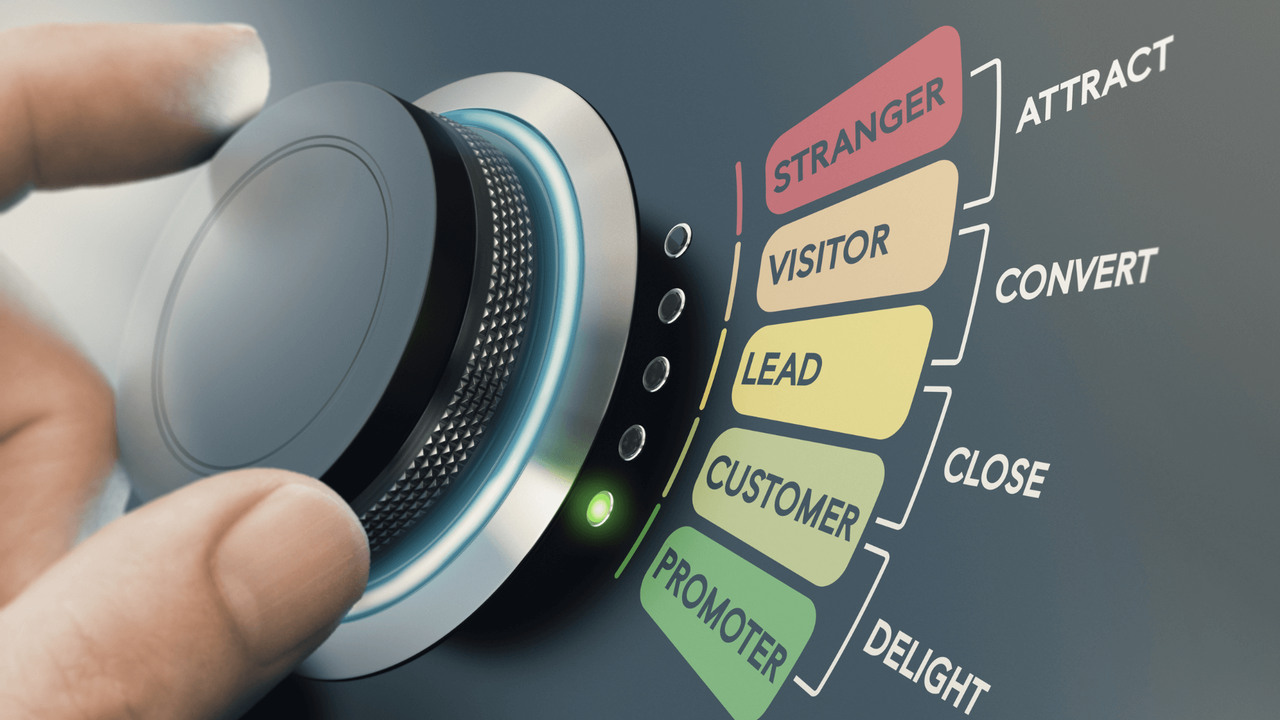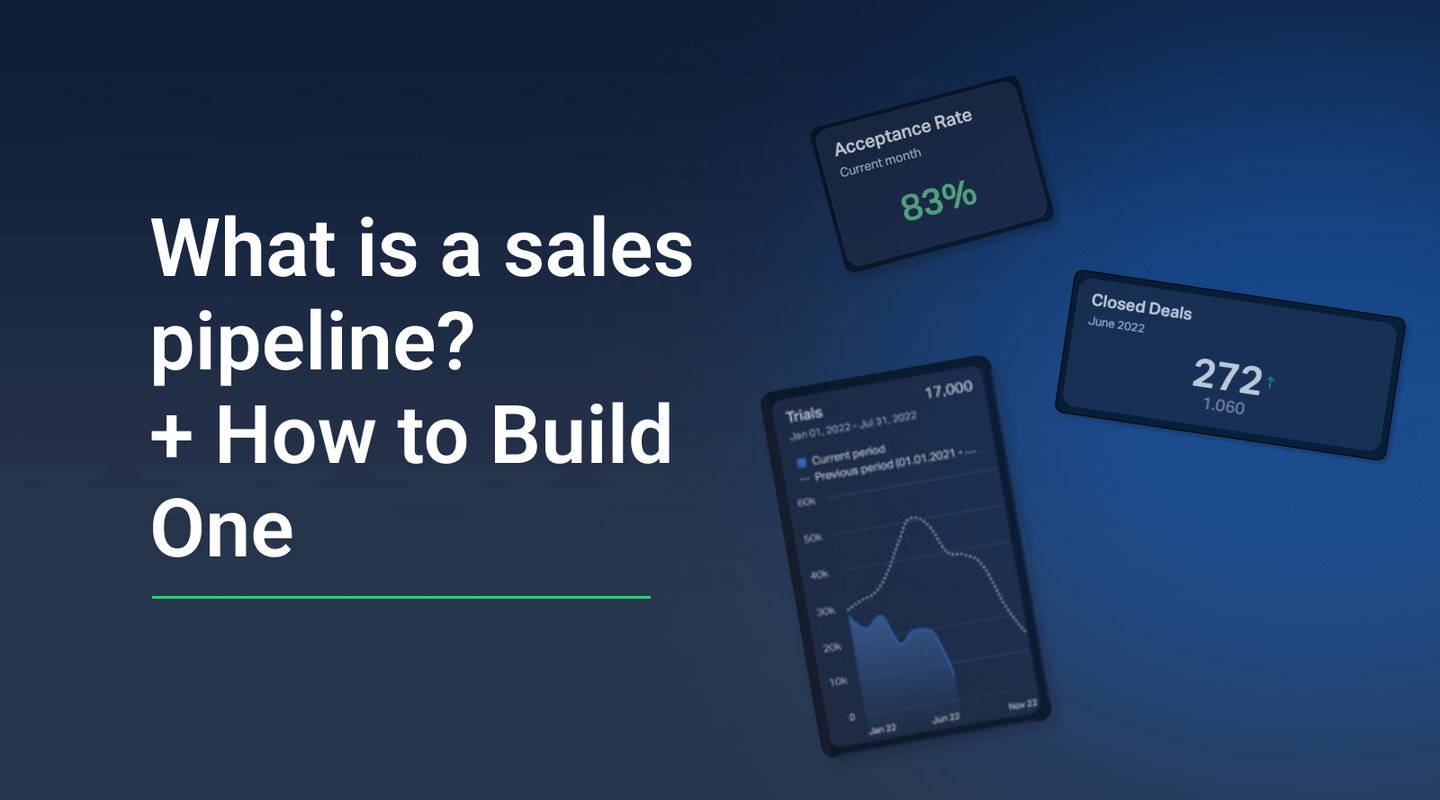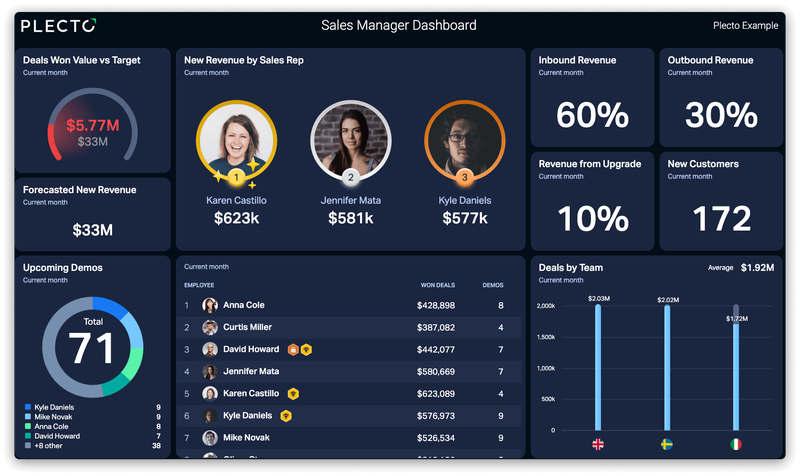As business becomes more competitive, many sales departments are either building a sales pipeline for the first time – or taking a closer look at their sales pipeline management and how to optimize it for better performance.
Read on to discover the typical sales pipeline stages and how to build a pipeline that can help you save time, keep better track of your sales process, and exceed your revenue goals. But first, if your sales department is really serious about becoming more data-driven, check out these recommended sales targets for 2023, the most important KPIs for sales managers to track, and our tips for high-velocity sales.
What is a sales pipeline – and how is it different from a sales funnel?
A sales pipeline is an important sales-management tool that breaks down the sales process into clear stages and tasks, making it easier to track the progress of every opportunity the sales team is pursuing. Salespeople are engaging with multiple prospects at any given time, and each deal is probably progressing at a different pace. A solid sales pipeline management software ensures that salespeople always know the status of each deal and what needs to be done next because it visually tracks potential customers as they move through the pipeline, entering as a lead and exiting as a paying customer – or a “lost deal.”
People often use the terms “sales pipeline” and “sales funnel” interchangeably, but they’re two different things. A sales pipeline tracks the sales process, whereas a sales funnel tracks the customer journey. In other words, the sales pipeline outlines the steps that a salesperson goes through to make a sale (e.g., lead qualification, initial meeting, demo), while the sales funnel outlines the stages prospects go through in their decision-making process (e.g., awareness, consideration, evaluation).
Sales pipeline management systems usually visualize the pipeline as a horizontal bar that’s divided into the different stages of the sales process. It shows the tasks associated with each stage and the progress of each prospect in their journey from lead to customer. Over time, a pipeline can help sales teams perfect their sales processes, get better at identifying the right prospects, and focus their attention on the activities that statistically bring the best return on their efforts.
So, what are the main sales pipeline stages and how do you build one?
The Sales Pipeline Stages
A sales pipeline maps specific activities to different stages of the sales process. Think of these pipeline stages as a roadmap of the steps each sales rep goes through as they try to win new business. While the sales pipeline stages can vary between businesses, a good “starter set” of sales pipeline stages could look like this:
- Lead Generation: The initial contact. This can be inbound (e.g., via a contact form) or outbound (e.g., a cold call or email).
- Lead Qualification: The sales rep determines whether the prospect is a good fit and worth pursuing.
- Initial Contact: The sales rep conducts a discovery meeting to get a better understanding of the prospect’s requirements.
- Meeting/Demo Set: The prospect has agreed to a meeting or demo to find out more about the product.
- Proposal Sent: The prospect wants to use the product, a specific recommendation has been proposed, and a quote has been sent.
Deal Won/Lost: The prospect buys or goes cold.
Build your first dashboard.
Start your 14-day free trial today
How to Build a Sales Pipeline
Now that we’ve mapped out a basic set of sales pipeline stages, let’s look at how to create a pipeline. A well-structured pipeline simplifies the sales process by breaking it down into a step-by-step process that can be easily replicated.
While you may already have a sales process in place, formalizing it as a sales pipeline ensures that everyone is following the same process, which creates a system that can be finetuned over time to improve efficiency and conversion rates. A pipeline can also improve accountability and ensure that reps are documenting the status of every active deal so that everyone can see how the department is progressing toward its targets.
These seven steps will set you on the path to creating an effective pipeline.
1. Define the pipeline parameters
Before you build a pipeline, it’s important to understand the lay of the land. For example, how long is your sales cycle? Are you satisfied with this or would you like to shorten it? The length of your sales cycle depends in part on your product’s complexity, whether or not it requires customization, the source of your leads (i.e., inbound vs. outbound), and how many stakeholders are involved. However, you can attempt to shorten it by reducing the time between the activities you’ll define in the next step.
To determine how many deals your salespeople should be pursuing at any one time, it could be useful to do some upfront calculations based on parameters like revenue targets and time to close. A simple approach is to figure out how many average-sized deals need to close in order to hit your sales targets, and work backward from there. Keep in mind that an average of 24% of deals in your pipeline will fail to close, so it’s important to “overfill” the pipeline for the best chance of reaching your goals. Breaking it down into monthly or quarterly targets can make it more manageable.

2. Define your pipeline stages and sales activities
Think of your pipeline as a “sales checklist” that shows the team what they’ve done, the status of each deal, and what they need to do next. A sales pipeline should include checkpoints that make it obvious when a prospect has moved from one stage to the next – and what the sales rep will do next. Once you’ve defined your pipeline stages, create a list of subtasks and timing for each stage. For example, define the individual steps involved in identifying and qualifying an outbound lead – and then specify each touchpoint (i.e., how many, which channels, and at what interval) after the prospect becomes a qualified lead. You’ll also want to document the criteria for moving a prospect from one stage to the next, when to disqualify a lead, and a process for following up with cold leads.
Pay particular attention to lead qualification, which is largely a numbers game. While it makes sense to cast a wide net in the beginning, it’s important to quickly narrow the playing field to avoid investing in the wrong prospects. As soon as possible, the sales rep should weed out prospects who are unlikely to buy or who are likely to be a bad fit. A lead-scoring system can save time and help to improve accuracy. Common scoring criteria include a verified need for the product, budget, timeline, and purchasing authority. At this stage, quality trumps quantity – the goal should be to qualify a handful of leads who are likely to buy and remain satisfied with their purchase.
3. Consolidate your leads
You can’t have a pipeline without leads, so the first practical step is to get all of your existing prospects into the system and classified according to their pipeline stage. Top-performing salespeople are constantly adding new leads to their pipelines – top sellers reportedly spend an average of six hours per week on prospecting. While this might be the first real step in creating a sales pipeline, it should be an ongoing effort because a seemingly full pipeline can quickly dry up. Ideally, the pipeline should be top-loaded. In other words, there should be more prospects in the beginning stages than in the later stages because the number of prospects generally decreases at each stage while the probability of closing increases as they move through the pipeline. Cold calling and referrals have long been mainstays of prospecting, but times are changing and HubSpot found that 56% of sales professionals now use social media to identify prospects, with Facebook (67%), LinkedIn (63%), and Instagram (62%) being the most effective platforms. Ideal customer profiles or personas can improve efficiency during this stage by narrowing down who to target.

4. Define your lead-nurturing tactics
Effectively nurturing leads is crucial to moving them through the pipeline. In the very early stages, this could mean initiating regular, personalized communication that addresses the prospects’ pain points. As the prospect moves farther into the pipeline, this is often a consultative process in which the salesperson does a deep dive into the prospect’s needs, explains why their product is the best option, and addresses objections. Depending on the prospect’s readiness to buy, the sales rep might schedule a demo or take a softer approach where they try to create value and build a relationship through ongoing emails and information sharing (e.g., case studies, articles, whitepapers). Most important at this stage is to be responsive and available. One of the main reasons companies lose business to a competitor is because they’re too slow to respond – 30–50% of sales go to the vendor who responds first. If your department doesn’t already have one, consider creating a content library. This article explains how to create a sales enablement program, including a content library and email templates and sequences that provide the right level of personalization with minimal ongoing effort.
5. Evaluate your process
Looking into specific activities at each stage, how long prospects typically spend in each stage, and where they typically exit without buying can help to highlight bottlenecks and areas needing improvement. Once you know what isn’t working, you can experiment until you discover what does work. Over time, you should be able to accurately forecast how many deals should be in each stage at any given time in order to hit your goals.
6. Establish best practices
Once you have a grasp on how prospects are moving through (or exiting) the pipeline and how long they typically spend at each sales pipeline stage, you can further refine your pipeline strategy by formalizing targets and benchmarks, for example:
- Target number of deals in the pipeline
- Target deal/pipeline value
- Target win rate
- Target sales cycle length
- Maximum time to first contact for inbound leads
7. Keep building the relationship
Once the deal has closed, the customer relationship is just beginning! Cross-sells, upsells, and great customer retention require ongoing attention. So who’s responsible? If the customer will remain under the sales rep’s jurisdiction, there should be a follow-up plan. Many companies are creating customer success teams, which take the reins after the initial sale has been made. They’re responsible for ongoing relationship building and customer retention. To learn more about this approach, check out this article about how sales and customer success can work together to grow revenue and improve customer satisfaction.
Plecto – A Perfect Complement to Your Pipeline
Plecto integrates with most major sales-tracking software to give you instant access to your most important metrics via real-time sales performance dashboards and automated reporting. Keeping a close eye on these metrics can help you understand why some deals closed while others didn’t, at which stage deals are most likely to stall – and more!
Plecto also provides built-in tools like leaderboards, contests, and instant notifications to spur friendly competition and keep your sales team performing their best.
Sign up for a free 14-day trial and see how Plecto can complement your pipeline and help you succeed!




